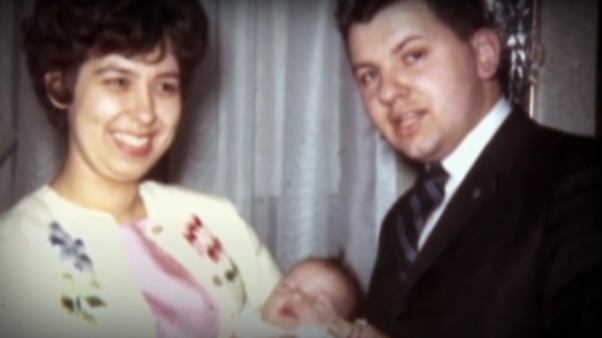It can be frustrating and confusing when your Dell laptop won’t turn on. However, there are a few potential causes that you can check yourself before taking it in for repair.
First, ensure that the power cord is plugged in securely and that the outlet works.
If the laptop still doesn’t turn on, try removing and replacing the battery. If the problem persists, it could be due to a faulty power supply or motherboard.
Occasionally, a software issue can also prevent a laptop from powering on. If you suspect this is the case, try restarting the computer in Safe Mode. This will allow you to access the computer’s essential files and troubleshoot software issues. If all else fails, contact Dell customer support for assistance.
Main Reason Why Dell Laptop won’t turn on:
Any time you encounter a problem with your computer, it can be frustrating. After all, we rely on our laptops for work, school, and entertainment, and when they don’t function properly, it can throw a major wrench in our plans. One common issue is when a Dell laptop won’t turn on.
This can be due to several factors, including battery or power supply issues, damage to internal hardware, or a virus or other malware. Sometimes, the problem may be as simple as corrupted system BIOS or Windows files.
Before taking your laptop to a repair shop, you can try a few things. First, check to ensure the laptop is plugged in correctly and the power supply is working properly.
If the laptop still doesn’t turn on, try removing it and replacing the battery.
If that doesn’t work, try booting into Safe Mode to see if that solves the problem.
If none of these solutions work, it’s time to consult a professional. With some troubleshooting, you should be able to get your Dell laptop up and running again in no time.
Solutions to fix your Dell Laptop (Main Steps):
Here are some steps for troubleshooting a Dell that won’t turn on, from the most straightforward and most apparent to more advanced fixes:
- First, check to ensure the laptop is properly plugged in and the power cord is not loose. If the laptop is plugged in but won’t turn on, try plugging it into a different outlet to see if that makes a difference.
- If the laptop isn’t responding to being plugged in, the next step is to remove the battery and try starting the laptop without it. If this works, it’s possible that the battery is bad and needs to be replaced.
- If removing the battery doesn’t fix the problem, the next step is to try starting the laptop in Safe Mode. Start by pressing and holding down the F8 key while you turn on the power.
- This should bring up a menu of options; select Safe Mode and press Enter. If the laptop starts in Safe Mode, there may be an issue with one of your device drivers or with a piece of software installed.
- You can try uninstalling any recently installed software or updates to see if that fixes the problem.
- If none of these steps work, your laptop may have a more serious hardware issue.
- In this case, you’ll likely need to take it to a qualified technician for repair.
Remove Any USB Device:
USB storage devices can sometimes cause this problem, so removing them is a good idea before you start troubleshooting. If taking out the USB storage devices doesn’t fix the problem, you may need to change the boot order in your BIOS.
This will ensure that your hard drive is at the top of the list, and your computer will automatically try to boot from it first. Once you’ve made the changes, save them and restart your computer. With any luck, it should boot up without any issues.
Hard Resetting your Dell Laptop
Many people have experienced the frustration of a laptop that won’t turn on. In most cases, there is a simple fix. Usually, a hard reset helps fix many problems and drains any residual power that may be causing the issue.
Just follow the steps below:
Step 1: Turn off your Dell laptop.
Step 2: Disconnect the power cord or AC adapter, and remove the battery from the laptop.
Step 3: Unplug all the external devices or peripherals, including printer cables, media cards (SD or xD), USB drives, and more.
Step 4: Press the power button for 15-20 seconds to drain residual power.
Step 5: Connect the charger and battery to your Dell laptop.
Run the Dell PC diagnostic tool
If your Dell computer won’t turn on, don’t panic. There’s a built-in troubleshooting tool that can help identify the problem. When you power on your PC but it doesn’t boot up successfully, the Dell Error Code 2000-0142 or something like that will appear. This error code can help point you in the right direction to fix the issue.
It’s important to note that this error code may not automatically fix the problem, but it can help you troubleshoot and find a solution. If you’re still having trouble, contact Dell customer support for additional assistance. Most probably it fix all the problem automatically.
Remove all the viruses and malware from your device:
Your Dell laptop is an important part of your life, and you rely on it to stay connected with the world. However, viruses and other malware can cause your PC to freeze at startup, making it difficult or even impossible to use.
If you suspect that your PC has been infected, it’s important to take immediately action to remove the malware. The first step is to boot your PC into safe mode, preventing non-essential programs from running.
Once in safe mode, you can run antivirus software to scan your system for security threats. If any threats are found, the software will provide instructions for removing them. By taking these steps, you can help to ensure that your Dell laptop is safe and secure.
Use Safe Mode:
If your PC is having trouble booting into Windows, you may want to try starting in Safe Mode. Safe Mode is a special mode that starts your computer with only the essential programs and services.
This can be helpful if you’re having trouble with a program or service that’s causing startup issues.
To start in Safe Mode, simply turn on your computer and press the F8 key repeatedly before Windows starts up.
This will bring up the Advanced Boot Options menu.
From there, select Safe Mode and press Enter.
Your computer will now start in Safe Mode.
From here, you can scan for viruses and delete any programs that may be causing startup issues.
Factory Reset your laptop:
If your computer is giving you trouble, it may be time to hit the reset button. A factory reset will clean your hard drive and reinstall a fresh copy of Windows, returning your PC to the state it was in when you first bought it.
This can be a great way to fix major problems, but it also means you’ll lose all your files, so be sure to back up anything you don’t want to lose before you begin.
To factory reset your PC, open the Settings app and update & Security > Recovery.
Under “Reset this PC,” click “Get started” and follow the prompts.
Remember that this is a drastic measure, so if you’re having minor problems, you may want to try some other troubleshooting tips first.







